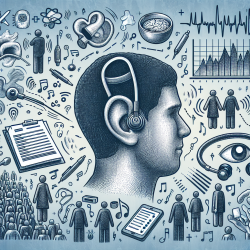Introduction
Speech Sound Disorder (SSD) is a prevalent developmental disorder affecting children's ability to articulate and produce phonological sounds correctly. With a prevalence rate of 2-13%, SSD is a significant concern for speech-language pathologists (Shriberg et al., 1999). Recent research by Murphy et al. (2015) compared two intervention approaches—non-linguistic auditory training and phonological intervention—to determine their effectiveness in improving phonological skills in children with SSD.
Understanding the Research
The study involved 17 children aged 7-12 years with SSD, divided into two groups: one receiving non-linguistic auditory training and the other phonological intervention. Both interventions consisted of 12 sessions, each lasting 45 minutes, delivered twice weekly. The auditory approach focused on non-linguistic auditory tasks like backward masking and frequency discrimination, while the phonological approach targeted speech sound training.
Key Findings
Intra-group analysis revealed significant gains in auditory and cognitive measures for the auditory group, while the phonological group showed no significant improvements. Inter-group analysis highlighted that the auditory intervention led to more pronounced gains in auditory measures and visual attention, though neither group showed significant improvement in phonological skills.
Implications for Practitioners
These findings suggest that while non-linguistic auditory training can enhance certain cognitive and auditory skills, it may not directly translate to improved phonological skills. Practitioners should consider integrating both approaches to maximize outcomes. Further research is encouraged to explore tailored interventions that address individual phonological deficits.
Conclusion
The study by Murphy et al. (2015) provides valuable insights into the efficacy of different intervention approaches for children with SSD. While non-linguistic auditory training shows promise in enhancing auditory and cognitive skills, phonological skills require targeted interventions. Practitioners should remain informed and adaptive, utilizing evidence-based practices to support children's speech and language development.
To read the original research paper, please follow this link: Children with speech sound disorder: comparing a non-linguistic auditory approach with a phonological intervention approach to improve phonological skills.










